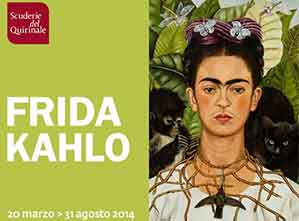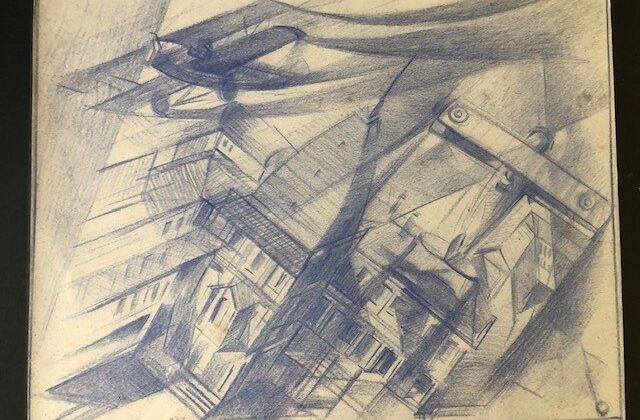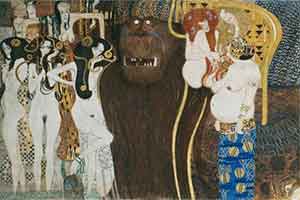Frida Kahlo Exhibition – Scuderie del Quirinale, Roma

Frida Kahlo – a life of suggestions of pain and sufferance, ended with an overdose ?
at Scuderie del Quirinale, Roma
by Francesco Carelli
Professor of Family Medicine, Milan , Rome
Frida Kahlo’s life began and ended in Mexico City, in her home known as the Blue House. Her work has been celebrated in Mexico as emblematic of national and indigenous tradition and by feminists for its uncompromising depiction of the female experience and form.
Mexican culture and Amerindian cultural tradition are important in her work, which has been sometimes characterized as naïve art or folk art. Her work has also been described as surrealist, and in 1938 André Breton, principal initiator of the surrealist movement, described Kahlo’s art as a “ribbon around a bomb”.
Kahlo had a volatile marriage with the famous Mexican artist Diego Rivera. She suffered lifelong health problems, many caused by a traffic accident she survived as a teenager. Recovering from her injuries isolated her from other people, and this isolation influenced her works, many of which are self-portraits of one sort or another. Kahlo suggested, “I paint myself because I am so often alone and because I am the subject I know best.” She also stated, “I was born a bitch. I was born a painter.”
Kahlo contracted polio at age six, which left her right leg thinner than the left; she disguised this later in life by wearing long, colorful skirts. It has been conjectured that she was born with spina bifida, a congenital condition that could have affected both spinal and leg development. She participated in boxing and other sports.
On September 17, 1925, Kahlo was riding in a bus that collided with a trolley car. She suffered serious injuries as a result of the accident, including a broken spinal column, a broken collarbone, broken ribs, a broken pelvis, eleven fractures in her right leg, a crushed and dislocated right foot, and a dislocated shoulder. Also, an iron handrail pierced her abdomen and her uterus, compromising her reproductive capacity.
The accident left her in a great deal of pain, and she spent three months recovering in a full body cast. Although she recovered from her injuries and eventually regained her ability to walk, she had relapses of extreme pain for the remainder of her life. The pain was intense and often left her confined to a hospital or bedridden for months at a time. She had as many as 35 operations as a result of the accident, mainly on her back, her right leg, and her right foot. The medical complications and permanent damage also prevented Kahlo from having a child; though she conceived three times, all her pregnancies had to be terminated.
After the accident, Kahlo abandoned the study of medicine to begin a painting career. She painted to occupy her time during her temporary immobilization. Her self-portraits were a dominant part of her life when she was immobile for three months after her accident.
Her mother had a special easel made for her so she could paint in bed, and her father lent her his box of oil paints and some brushes.
Drawn from personal experiences, including her marriage, her miscarriages, and her numerous operations, Kahlo’s works are often characterized by their suggestions of pain.
Kahlo created at least 140 paintings, along with dozens of drawings and studies. Of her paintings, 55 are self-portraits which often incorporate symbolic portrayals of physical and psychological wounds. She insisted, “I never painted dreams. I painted my own reality.”
Kahlo was also influenced by indigenous Mexican culture, which is apparent in her use of bright colors, dramatic symbolism and primitive style. She frequently included the symbolic monkey. In Mexican mythology, monkeys are symbols of lust, but Kahlo portrayed them as tender and protective symbols. Christian and Jewish themes are often depicted in her work.[24] She combined elements of the classic religious Mexican tradition with surrealist renderings.
At the invitation of André Breton, she went to France during 1939 and was featured at an exhibition of her paintings in Paris. The Louvre bought one of her paintings, The Frame, which was displayed at the exhibit. This was the first work by a twentieth-century Mexican artist to be purchased by the renowned museum.
As a young artist, Kahlo communicated with the Mexican painter, Diego Rivera, whose work she admired, asking him for advice about pursuing art as a career. He recognized her talent. He encouraged her artistic development and they began an intimate relationship. They were married in 1929, despite the disapproval of Frida’s mother.
Their marriage was often troubled. Kahlo and Rivera both had irritable temperaments and numerous extramarital affairs. The bisexual Kahlo had affairs with both men and women, including Isamu Noguchi and Josephine Baker; Rivera knew of and tolerated her relationships with women, but her relationships with men made him jealous. For her part, Kahlo was furious when she learned that Rivera had an affair with her younger sister, Cristina. The couple divorced in November 1939, but remarried in December 1940. Their second marriage was as troubled as the first. Their living quarters were often separate, although sometimes adjacent.
Active communists, Kahlo and Rivera befriended Leon Trotsky during the late 1930s, after he fled Norway to Mexico to receive political asylum from the Soviet Union, where he was expelled and sentenced to death during Joseph Stalin’s leadership. During 1937, Trotsky lived initially with Rivera and then at Kahlo’s home (where he and Kahlo had an affair). Trotsky and his wife then relocated to another house in Coyoacán where, in 1940, he was assassinated. Both Kahlo and Rivera broke with Trotskyism and openly became supporters of Stalin in 1939.
Kahlo died on July 13, 1954, soon after turning 47, and was cremated according to her wishes. A few days before her death, she wrote in her diary: “I hope the exit is joyful — and I hope never to return — Frida”.
The official cause of death was given as a pulmonary embolism, although some suspected that she died from an overdose that may or may not have been accidental.] An autopsy was never performed. She had been very ill throughout the previous year, and her right leg had been amputated at the knee, owing to gangrene. She had had a bout of bronchopneumonia about that time, which had left her quite frail.
In his autobiography, Diego Rivera would write that the day Kahlo died was the most tragic day of his life, adding that, too late, he had realized that the most wonderful part of his life had been his love for her.



